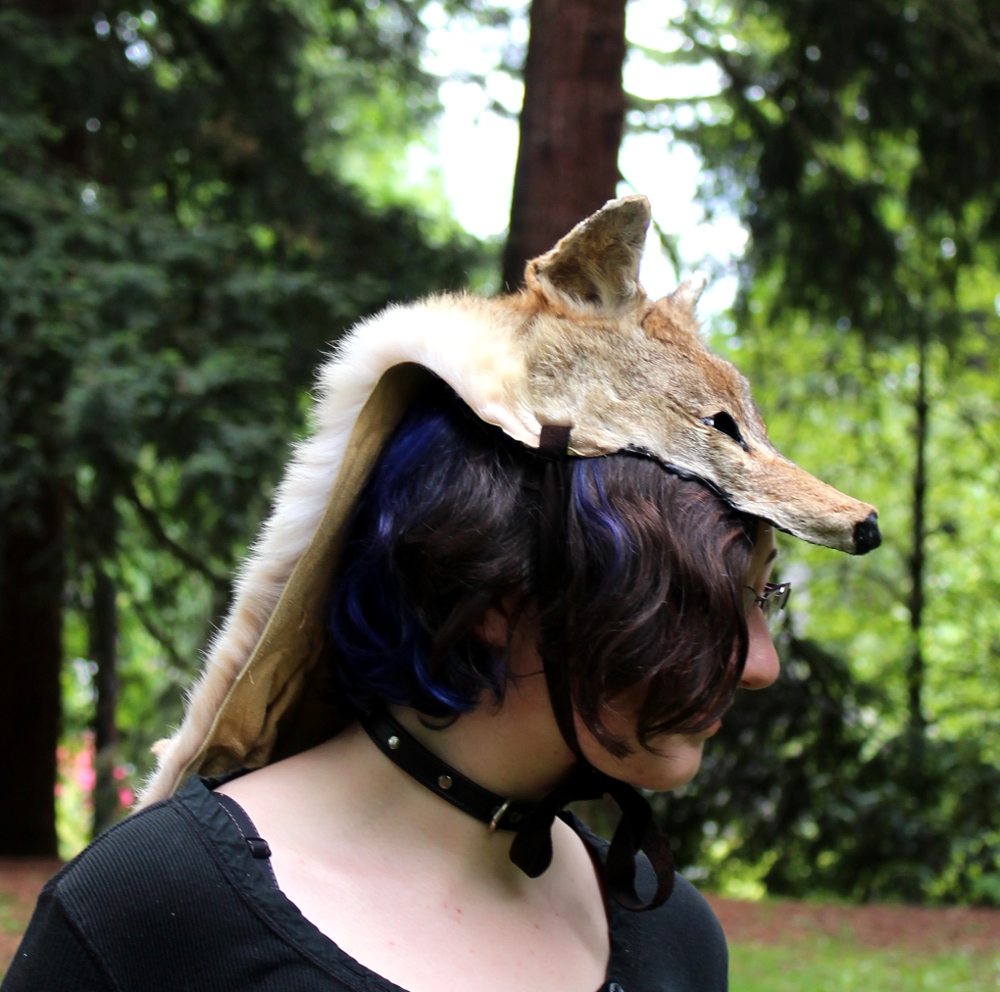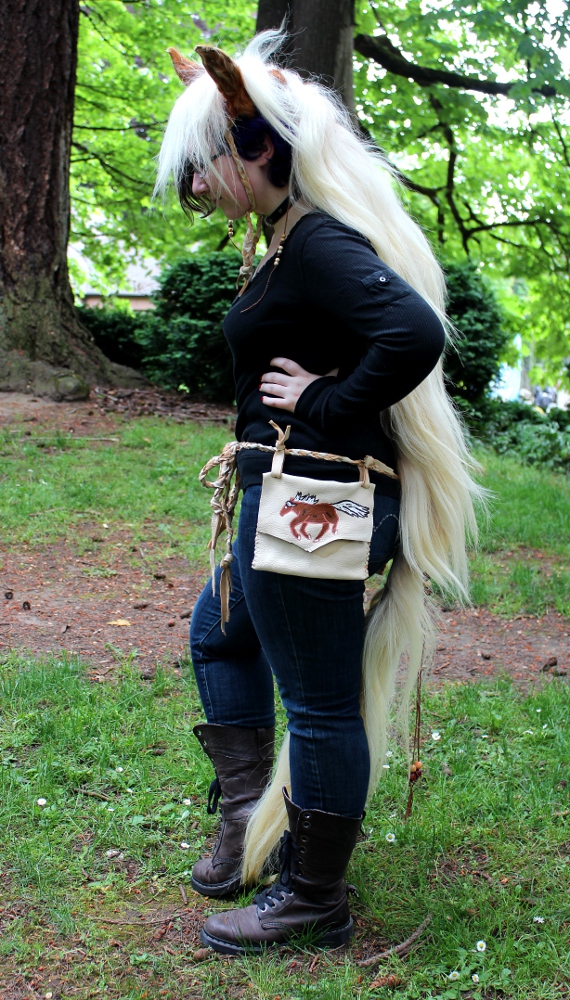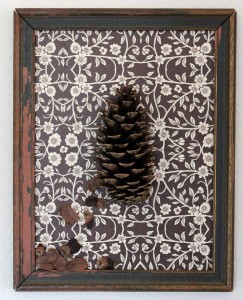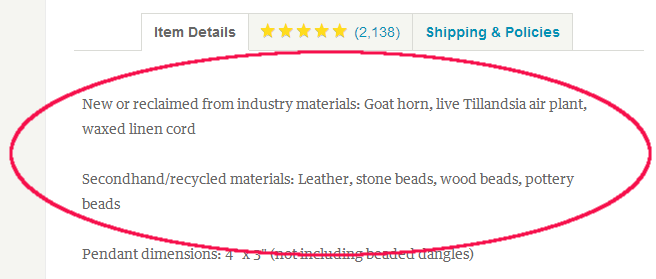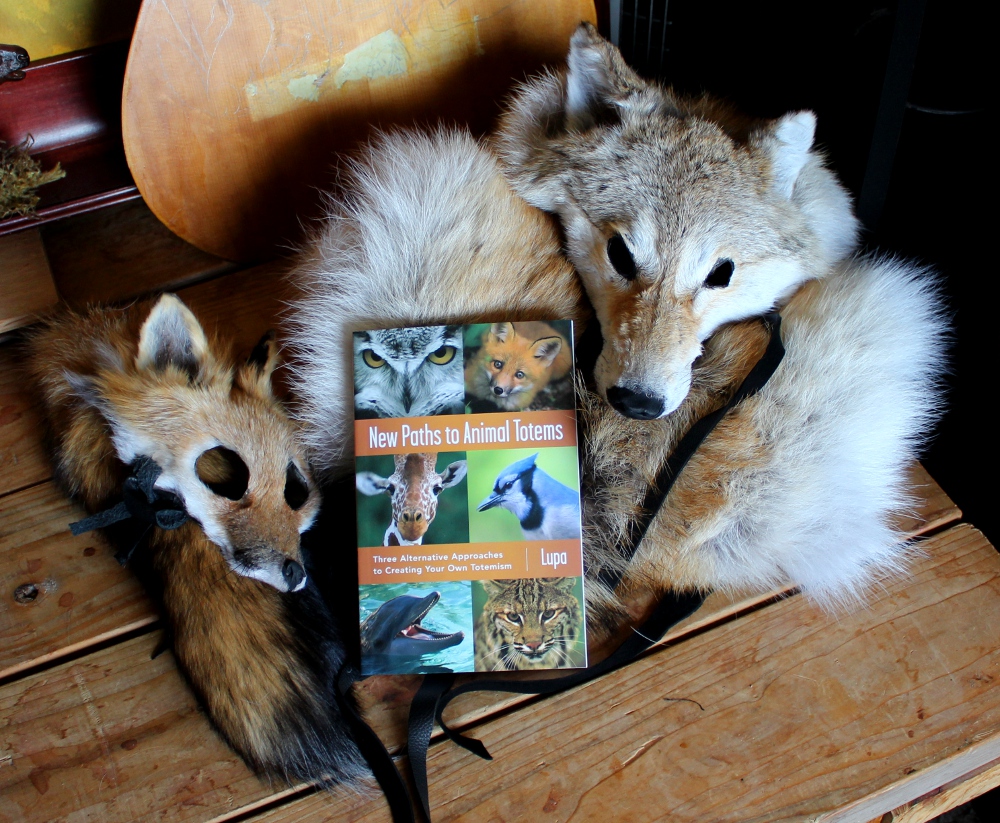This past weekend, I listed the first big bunch of animal hide headdresses that I’ve posted in about a year over on my Etsy shop. Traditionally, headdresses have been a mainstay of my artwork; I made my first one in 2002, and have continued with it ever since. They’ve become one of my signature offerings, and I’ve made hundreds of them in the past decade and change, both on spec and as custom orders.
Last year, during the summer when I was doing temp work full-time at my old internship site, I was also struggling to keep the Green Wolf going as a business. I knew the day job was only going to be a few months, and I needed something to come back to once it was done. It was really exhausting, as you might well imagine, and during the latter weeks of this experience I found myself feeling quite pent-up creatively. I only had the time to keep making the most bare-bones fundamentals of my shop and booth, and there wasn’t a lot of time for what I call “me art time”, which is where I get to experiment with creativity, try new techniques and materials, and so forth. It felt pretty stifling.
So by the time October rolled around and I was free to be self-employed again, I found myself being completely unwilling to go back to my old rotation of “Today I’ll make this sort of thing, and tomorrow I’ll make these, and the next I’ll get some more of those going…” I wanted to shake things up a bit (while also making sure I kept paying my bills!) So I dove into some new artistic territory, doing more assemblage pieces and other experiments.
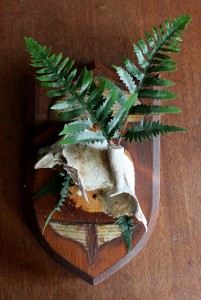
So other than a few headdresses for my vending booth and whatever custom orders came in, I stopped making them a regular part of my art. I kept experimenting with new media, and pushed myself out of my comfort zone. I began feeling that I didn’t just want to not be known only as “Lupa the headdress artist”–I also felt corralled into the label of “Lupa the hide and bone artist”. So I spent much of the winter trying to reinvent myself and my artwork, not throwing out the good things, but adding on more good things, if that makes sense.
I really needed it, too. One of the things about being an artist for a living, rather than as a hobby, or having someone else financially supporting you while you make art, is that there are certain popular pieces that will replace your day job as your primary form of income. It’s easy to get stuck in a rut with them, too, and I realized that art had stopped being as much fun because of it. I needed to be able to get back to my roots as a creative person, that busy, somewhat crazed immersion in possibilities melded with opportunities serving as brief snapshots of where I was with regards to skill and inspiration.
And I think I felt I needed to prove something to myself and to others–that I wasn’t just a one-trick artist, that I didn’t just make headdresses (and a few other things). Moreover, at some point making headdresses became trendy, and more and more people started trying to cash in. I didn’t want to get lost in the masses, but I didn’t want to define myself by just making yet another variation on the headdress.
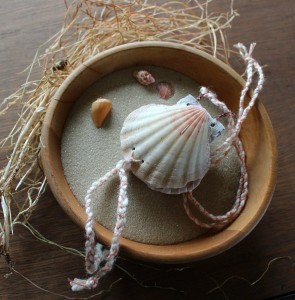
It wasn’t until this month, though, that I felt ready to go back to the headdresses. I missed them, really, and while I really enjoy making custom pieces for other people, it’s not the same as getting to create them on my own time, with no restrictions. So I pulled out a few hides I had stored away and spent a couple of weeks stitching up tears and holes, reshaping ears and faces, adding straps, and getting them ready to wear.
And then I went out with my friend Julie to Laurelhurst Park where she graciously modeled the new headdresses for me while I took photos. As I did, I felt my old enthusiasm for the headdresses coming back. Watching another person take on these spirits, even for a few minutes, and enjoy connecting with them reminded me why I started making them in the first place. I wanted to see them go to new homes where they could have that kind of attention more often, and teach someone new how to dance and shift and return to their animal selves. I wanted them to have the same opportunities my own headdresses had, and make those new relationships happen.
It led to a sense of completion, like the last piece fell into place–for the moment, anyway. No doubt I’ll want to shake things up again before too long. But for the moment, I think it’s going to be a good summer for headdresses.
You can see some of my headdresses, present and past, in my portfolio and my Etsy shop. I am also available for custom work; feel free to contact me with your ideas and requests.

